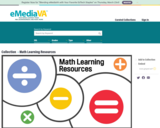
Identifying Ordinal Positions First through Tenth; Using Ordered Sets of 10 Objects Mathematics Instructional Plan
- Subject:
- Mathematics
- Material Type:
- Lesson Plan
- Provider:
- VDOE
- Author:
- VDOE
- Date Added:
- 10/03/2024

Identifying Ordinal Positions First through Tenth; Using Ordered Sets of 10 Objects Mathematics Instructional Plan

Ordinal Position (First through Tenth) Formative Assessment - Just in Time Quick Check, Teacher Notes, and Supporting Resources

Identifying Ordinal Positions First through Tenth; Using Ordered Sets of 10 Objects Mathematics Instructional Plan

Identifying ordinal positions first through tenth, using ordered sets of 10 concrete objects Mathematics Instructional Plans (MIPs) help teachers align instruction with the 2016 Mathematics Standards of Learning (SOL) by providing examples of how the knowledge, skills and processes found in the SOL and curriculum framework can be presented to students in the classroom.

Students will construct a program to help their friend safely retrieve their stuffed animal. They will debug their program if needed. They then will observe whether there are patterns in their codes which could be looped. AS they discuss their programs, they will be encouraged to use ordinal numbers.

Set students up for programming success by creating a BeeBot anchor chart!These editable instructions will help students identify their role as planner or driver and set clear expectations of how Bee-Bot is used in computer programming. Tips:Introduce Bee-Bot whole classMake sure students understand the importance of the clear (x) button to erase the previous codealways press clear first to signal a new code (like how a capital letter signals the start of a new sentence) Plan the program in developmentally appropriate steps (some students program one step at a time, while others can program to the end goal)Turn the Bee-Bot off and use it as a game piece to write successful algorithmsHave students write their plan, or algorithm, on a whiteboard instead of using the cardsThe Bee-Bot emulator is perfect for guided practice!

1.3 Identifying Ordinal Numbers Co-Teaching MIP

This video is part of the Learn and Grow with WHRO TV series. Watch Carolyn Harris teach about ordinal numbers to the tenth position.

Students will find helpful resources for learning and practicing math skills and processes in this eMediaVA collection.

Identifying ordinal positions first through tenth, using ordered sets of 10 concrete objects. Mathematics Instructional Plans (MIPs) help teachers align instruction with the Mathematics Standards of Learning (SOL) by providing examples of how the knowledge, skills and processes found in the SOL and curriculum framework can be presented to students in the classroom.